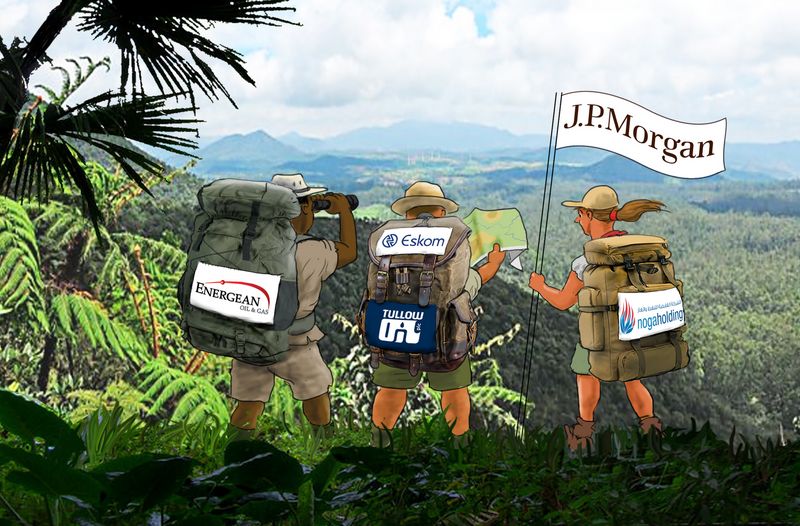Corporate pioneer:
Corporate issuers surged to the fore in 2021 with a stack of debut names among the throng. For its leadership in this area and its work in threading together issuers that spanned asset classes and geographies while also using its balance sheet to help clients, JP Morgan is IFR’s Emerging EMEA Bond House of the Year.
![]()
If 2020 was the year of sovereign issuance in the emerging EMEA region thanks to the onset of Covid-19, then 2021 was the year of corporates as economies began to recover.
In absolute terms, sovereigns were still the biggest issuers by volume. But what stood out was the relative growth of non-sovereign issuance in 2021, up by more than 40% compared with the previous year. And within that it was corporates, much more than financials, that accounted for that growth.
No bank did more to lead the way in the corporate sector than JP Morgan.
“We have brought innovative, pioneering deals where there has been a lot of scepticism that they could even get done at times, but every single KPI from those issuers has been achieved,” said Alexander Karolev, head of CEEMEA bond syndicate.
Debut issuance by corporates was one big theme of 2021 and JP Morgan was at the heart of it, including acting as bookrunner on the biggest such deal of the year: Energean Israel’s US$2.5bn four-tranche offering. As left-lead JP Morgan prepared the way by holding a non-deal roadshow to familiarise investors with the assets and the rationale for the trade, which came despite the fact that its largest gas fields have yet to come online.
The preparatory work also helped to identify the appropriate investor base for the bonds, which included EM accounts across the regions as well as US and European high-yield buyers.
Another standout corporate deal, albeit not a debut, was for oil and gas producer Tullow Oil, which got a US$1.8bn lifeline in May to rescue it from a potential restructuring. Once again, JP Morgan helped marry disparate investor bases and stakeholders.
The ability to provide a variety of solutions to issuers was exemplified by a deal for Bahrain state-owned company Nogaholding.
While Nogaholding’s deal was just a US$250m reopening, JP Morgan and the other leads managed to entirely derisk a deal needed to accelerate capex.
Rather than access short-term bridge financing, and potentially find itself unable to take that out if markets turned as they had in 2020, JP Morgan offered to fully underwrite a tap of Noga’s 2024s. The result was longer-term funding at competitive levels versus a bridge.
“Our platform is not just about putting in people and resources but also time,” said Hani Deaibes, head of MENA DCM. “It’s about taking the time to discuss not a specific transaction but step back and think about the capital structure and being truly agnostic about what you offer.”
The willingness to materially back an issuer was also evident in a US$500m six-year private placement for troubled South African utility Eskom in July.
The US bank's trading desk took down the bond, which was then placed into the broader market once the bank had assessed its hedging and selling options.
The private placement was government-guaranteed, which helped Eskom issue at much lower yields than it would as a standalone credit. Although a traditional publicly syndicated 144A/Reg S bond would have provided even better pricing, the issuer had run out of time to access that option, turning instead to JP Morgan to get it out of a fix.
“It was a neat solution to address an urgent funding requirement that had been delayed for some time and we did it by putting US$500m of exposure on the line with our balance sheet to create this funding solution,” said Stefan Weiler, head of CEEMEA DCM.
“The window for issuance of a public instrument passed and was no longer available but the funding need for the capex was still there.”
In the sovereign sector, JP Morgan came up with an even more novel solution to help Ukraine tackle its outstanding GDP-linked warrants liability.
The warrants will make payouts once Ukraine's economy grows to US$125.4bn and GDP growth per year rises above 3%. The payouts become bigger if growth goes above 4%, and the lack of a cap makes them a potentially limitless obligation.
Ukraine wanted to reduce this exposure, but the sovereign is prohibited from buying the warrants back with cash. Instead, JP Morgan arrived at a solution where Ukraine paid the bank in bonds and in turn JP Morgan bought back around 10% in notional amount of the warrants over several weeks.
“JP Morgan is the biggest player in secondary markets for a majority of Ukraine’s bonds. So we used that intelligence to do this discreetly,” said Weiler.
JP Morgan carried the risk as it waited for the bonds to be settled. The bank was then exposed for a couple of weeks before the bonds eventually matured in September.
To see the digital version of this report, please click here
To purchase printed copies or a PDF of this report, please email leonie.welss@lseg.com

